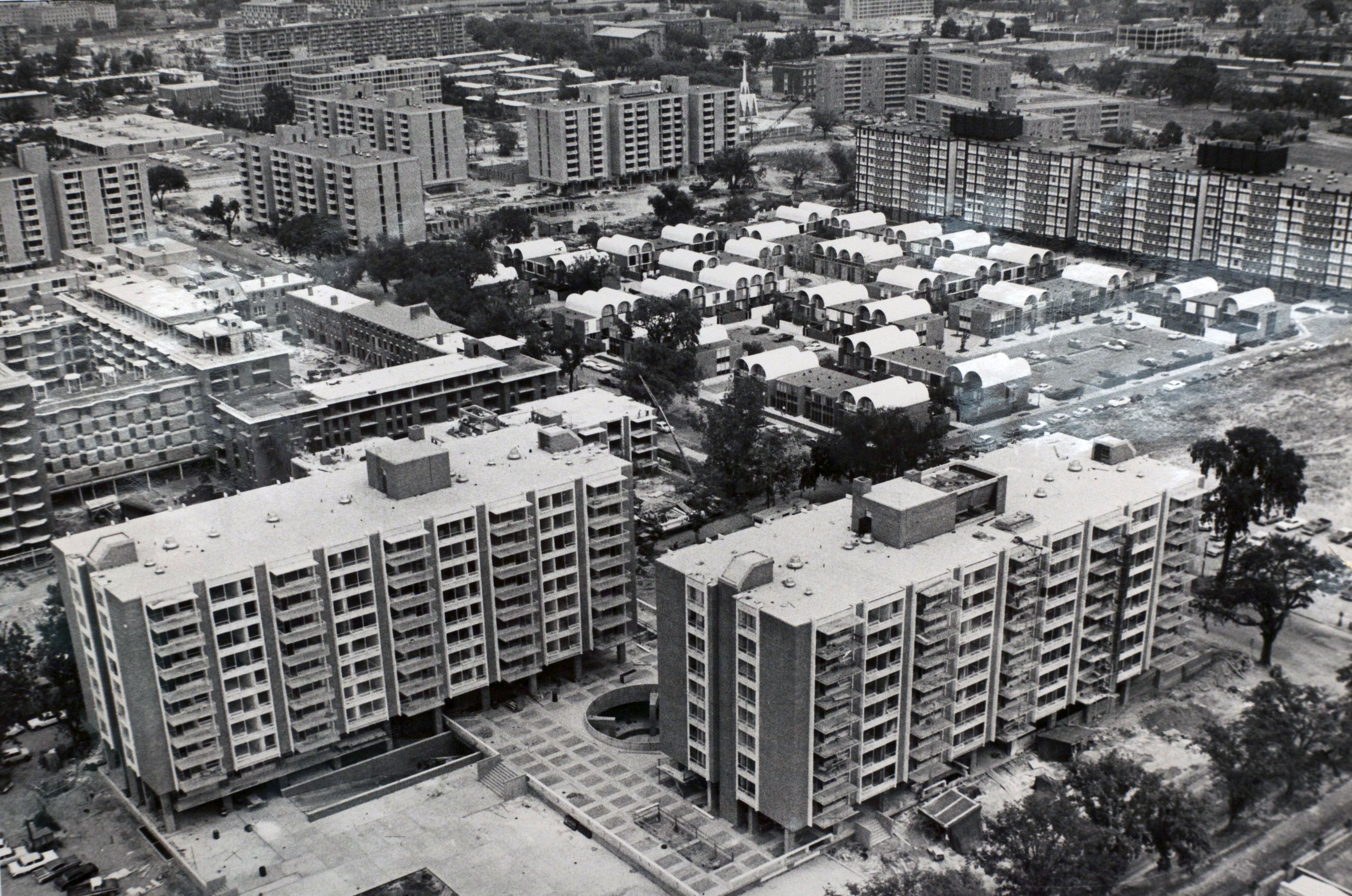 For me, it’s more than a theoretical question. In the spring of 1963, I was part of a meeting at 301 G St. SW, one of the early apartment buildings of the “new” Southwest that was then arising on the ashes of the “old.”
For me, it’s more than a theoretical question. In the spring of 1963, I was part of a meeting at 301 G St. SW, one of the early apartment buildings of the “new” Southwest that was then arising on the ashes of the “old.”
A group of us—black and white, from the newly developing area as well as Greenleaf Gardens and the older housing near South Capitol Street—had noted a void and were considering a remedy.
The void was in citizen organization. Up to the 1950s, there had been two citizen organizations in Southwest—an exclusively white Southwest Citizens Association, and an all-black Southwest Civic Association. But in the upheaval of urban renewal, both had faded into nonexistence.
The remedy we decided on that spring day in 1963 was to form an organization for everyone—residents of the remaining “old Southwest,” of the new urban renewal housing, and of the public housing area. We saw ourselves as a voice for a rapidly evolving, radically altered new Southwest quadrant of the capital city.
Our decision: to create the Southwest Neighborhood Assembly—now familiarly referred to as SWNA.
We envisioned the new organization as a strong citizen voice, speaking out on issues ranging from public schools to recreation, health and welfare services, physical safety, and emerging development issues. We decided to form task forces to focus on individual topic areas. And at that same meeting in April 1963 the initial leaders of the new neighborhood assembly were elected. The charter co-chairs would be Joseph Latimore, a prominent African-American resident, and myself, a garden variety “Anglo.”
Significantly, as founders we envisioned an open organization, reflective of citizen views; an assembly open to change and evolve as the new Southwest developed.
We set up a system of yearly community-wide voting for SWNA officers, the prevailing method, as we understood it, of neighborhood organization across the United States.
But we didn’t assume we were setting an organizational pattern that would necessarily last forever. We saw SWNA as an important experiment—in interracial experimentation and shared leadership and activity—and able to evolve and change to meet neighborhood needs and goals over time.
Now, a half-century later, a proposal for serious rewriting of SWNA procedures has been submitted. It would do away with the annual Southwest-wide vote for officers and board members—a procedure that has failed to enlist significant degrees of citizen participation. The suggested alternative: that the board of directors, based on suggestions from SWNA participants, actually designate the officers. The case is being made that board and officer energy should be focused on community activities, not the frustrating work of appealing to hundreds or thousands of citizens to vote for candidates they may not know well in any event.
Is it a perfect solution? In advance, no one can tell. But as long as SWNA continues its monthly meetings, open to all Southwest residents—the formula we began in 1963—there ought to be ample opportunities for all community views to be heard. And a way for new ideas for organizing SWNA to evolve over time.
My guess is that the original SWNA founders, if all could be magically reassembled, would have a straightforward reaction to the new plan:
“Yes, experiment; yes, innovate with your organizational form. Work hard to engage strong leaders—it’s tough to find them, the responsibilities they take on are real even if their posts are voluntary, and they merit support. But most important of all—keep those monthly meetings open, vibrant, and always welcoming new ideas.”
By: Neal Pierce
Neal Peirce has been a Southwest resident since 1961 and was a founder and initial co-chair of SWNA in 1963. As a professional journalist, he was political editor of Congressional Quarterly, a founder and contributing editor of National Journal, and the author of a multi-volume book set describing “people, politics, and power” in each of the 50 states. He is currently editor-in-chief of Citiscope (www.citiscope.org), an online news site reporting on significant innovations in cities across the world.

